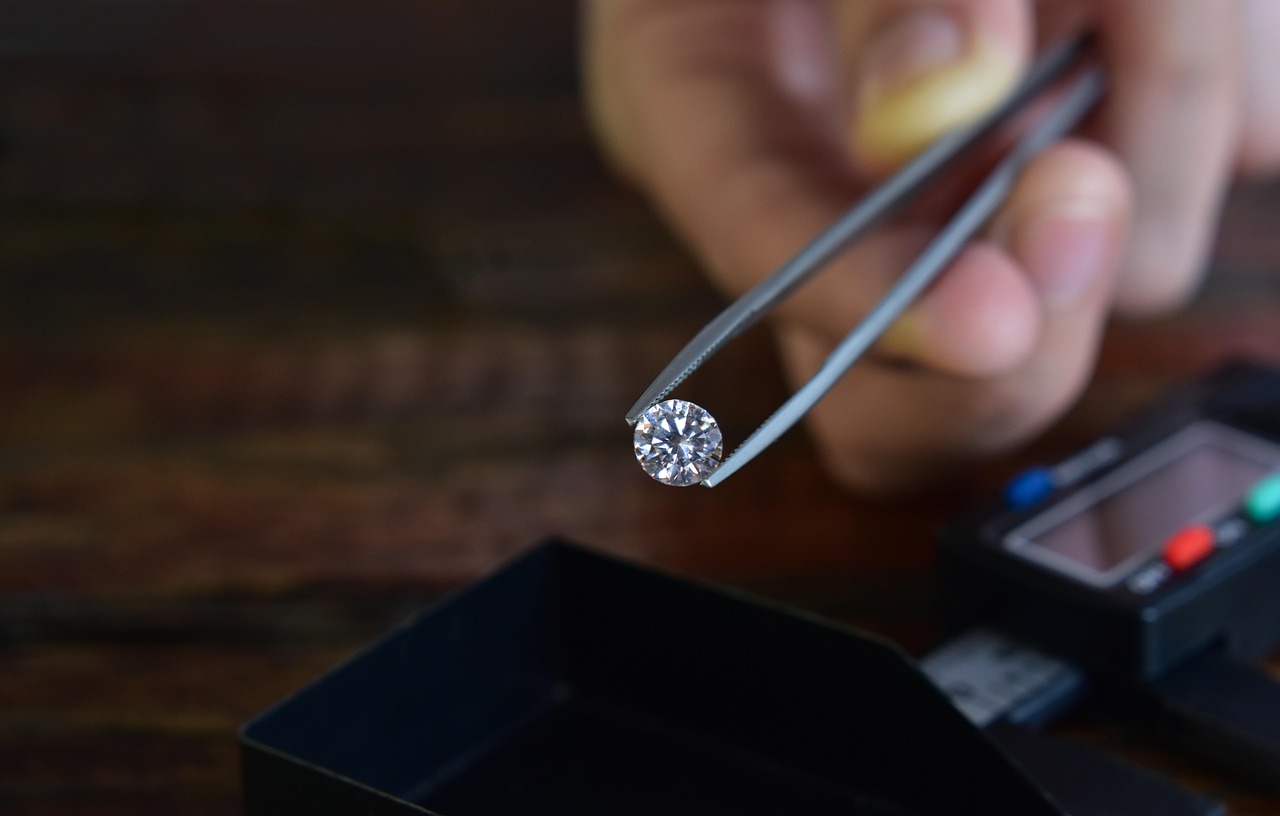This article explores the world of luxury jewelry, highlighting renowned brands, their unique offerings, and what makes them stand out in the competitive market of fine jewelry.
1. Introduction to Luxury Jewelry Brands
Luxury jewelry brands symbolize the highest level of craftsmanship, design, and exclusivity. Understanding their history and values allows consumers to appreciate the artistry embedded in each piece.
2. The History of Luxury Jewelry
The evolution of luxury jewelry spans centuries, reflecting cultural shifts and technological advancements. This section delves into the historical significance of these brands.
- 2.1 Ancient Civilizations and Jewelry
- Ancient civilizations utilized jewelry as symbols of status and power. This subheading explores how these early practices influenced modern luxury jewelry.
- 2.2 The Rise of Modern Luxury Brands
- The late 19th and early 20th centuries saw the emergence of iconic brands that shaped the luxury jewelry landscape.
3. Iconic Luxury Jewelry Brands
This section highlights some of the most prestigious jewelry brands, known for their exceptional quality and timeless designs.
- 3.1 Cartier: A Legacy of Elegance
Cartier is synonymous with luxury, known for its exquisite craftsmanship and iconic designs that have adorned royalty and celebrities alike.
- 3.2 Tiffany & Co.: The Blue Box Brand
Tiffany & Co. is famous for its signature blue box and engagement rings, representing romance and luxury in the jewelry industry.
4. The Craftsmanship Behind Luxury Jewelry
Understanding the meticulous craftsmanship that goes into luxury jewelry helps consumers appreciate the value and artistry of each piece.
- 4.1 Materials Used in Luxury Jewelry
Luxury jewelry often features high-quality materials such as gold, platinum, and precious gemstones, each selected for its beauty and durability.
- 4.2 The Role of Artisans and Designers
Artisans and designers play a crucial role in the creation of luxury jewelry, blending traditional techniques with innovative designs to produce stunning pieces.
5. The Importance of Brand Heritage
Brand heritage is vital in the luxury jewelry market, as it conveys authenticity and a commitment to quality that resonates with consumers.
- 5.1 Storytelling in Luxury Branding
Luxury brands often use storytelling to connect with consumers, sharing their history and values to enhance brand loyalty.
- 5.2 The Impact of Celebrity Endorsements
Celebrity endorsements can significantly influence a brand’s image, elevating its status and desirability in the luxury market.
6. Current Trends in Luxury Jewelry
Staying updated on current trends helps consumers make informed choices when investing in luxury jewelry, ensuring they select pieces that reflect their style.
- 6.1 Sustainable Luxury Jewelry
Sustainability is becoming increasingly important in the luxury jewelry industry, with brands adopting ethical practices and sourcing materials responsibly.
- 6.2 Personalization and Customization Trends
Consumers are increasingly seeking personalized and customized jewelry, allowing them to express their individuality through unique designs.
7. Conclusion: The Future of Luxury Jewelry
The luxury jewelry market continues to evolve, driven by innovation and consumer preferences. Understanding these dynamics helps consumers navigate the world of luxury jewelry effectively.
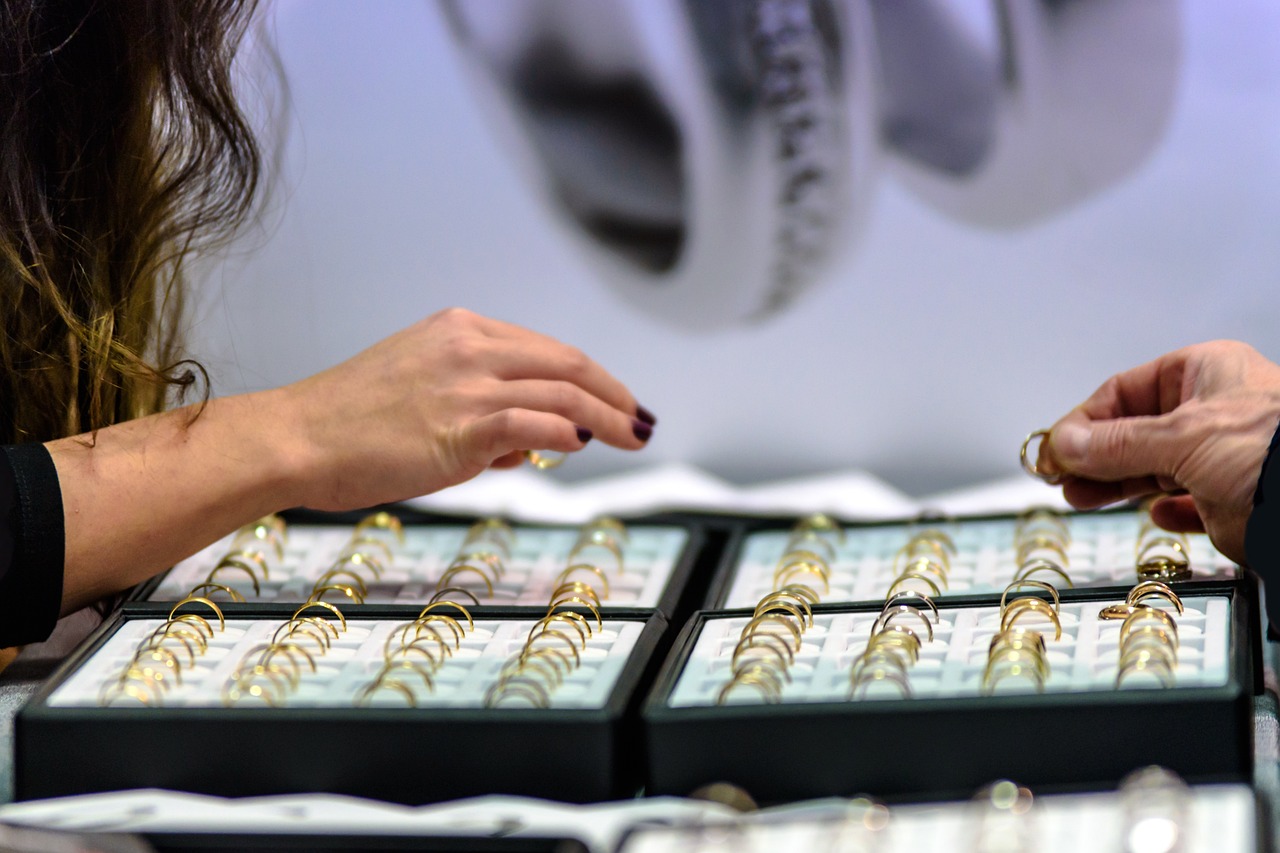
1. Introduction to Luxury Jewelry Brands
Introduction to Luxury Jewelry Brands
Luxury jewelry brands are not merely purveyors of exquisite adornments; they are the embodiment of artistry, heritage, and exclusivity. Each piece crafted by these prestigious brands tells a story, reflecting the meticulous attention to detail and the passion that goes into its creation. Understanding the values and traditions that underpin these brands allows consumers to truly appreciate the craftsmanship behind every jewel.
These brands often have a rich history, with roots that trace back to ancient civilizations where jewelry served as a symbol of power and status. Today, luxury jewelry is not just about adornment; it represents a lifestyle and a commitment to quality and elegance.
In the world of luxury jewelry, brands like Cartier and Tiffany & Co. stand out not only for their iconic designs but also for their ability to create emotional connections with their customers. The allure of a beautifully crafted piece goes beyond its physical appearance; it encompasses the heritage and values of the brand itself.
As consumers become more discerning, they seek to understand the narratives behind their purchases. This growing awareness highlights the importance of brand heritage and the stories that make each piece unique. Luxury jewelry brands are increasingly focusing on transparency and storytelling, allowing customers to feel more connected to their purchases.
In conclusion, the world of luxury jewelry is a fascinating blend of history, craftsmanship, and emotional resonance. By appreciating the artistry and heritage of these brands, consumers can make informed choices that reflect their personal style and values, ensuring that each piece they acquire is not just a purchase, but a meaningful addition to their collection.

2. The History of Luxury Jewelry
The history of luxury jewelry is a fascinating journey that spans thousands of years, showcasing the evolution of artistry, culture, and technology. From ancient civilizations to modern-day luxury brands, the significance of jewelry has transformed, reflecting societal values and advancements.
In ancient times, jewelry served not only as adornment but also as a symbol of power and status. Rulers and elites adorned themselves with intricate pieces made from precious metals and stones, signifying their wealth and influence. This practice laid the groundwork for the luxury jewelry industry we know today.
- 2.1 Ancient Civilizations and Jewelry
- 2.1.1 Egyptian Influence: The ancient Egyptians were pioneers in jewelry design, utilizing gold, lapis lazuli, and turquoise to create stunning pieces. Their artistry and symbolism have profoundly influenced contemporary luxury aesthetics.
- 2.1.2 Roman Innovations: The Romans introduced advanced techniques such as granulation and enameling, enhancing the complexity and beauty of jewelry. This innovation not only elevated jewelry’s status but also expanded its availability.
- 2.2 The Rise of Modern Luxury Brands: The late 19th and early 20th centuries marked a pivotal moment in luxury jewelry history, with the emergence of iconic brands like Cartier and Tiffany & Co. These brands established a legacy of excellence, combining tradition with innovation.
As we transitioned into the modern era, luxury jewelry continued to evolve, embracing new materials and technologies. Today, brands focus on craftsmanship and sustainability, appealing to a new generation of consumers who value ethical practices alongside luxury.
In conclusion, the history of luxury jewelry is a rich tapestry woven with cultural significance and technological advancements. Understanding this history enhances our appreciation for the craftsmanship and artistry that define luxury jewelry today.
2.1 Ancient Civilizations and Jewelry
Ancient civilizations played a pivotal role in the history of jewelry, using it not merely as adornment but as a profound expression of status and power. These early practices have significantly influenced the modern luxury jewelry industry, shaping the way we perceive and value fine jewelry today.
In ancient cultures, jewelry was often associated with the divine and the elite. For instance, in Egyptian society, jewelry was intricately linked to religious beliefs and was worn by both the living and the dead. The use of gold, lapis lazuli, and other precious materials symbolized wealth and connection to the gods. This practice set a standard for luxury that is still echoed in contemporary designs, where the use of high-quality materials signifies exclusivity and prestige.
Similarly, the Romans revolutionized jewelry-making techniques, introducing innovations such as gem cutting and enameling. They expanded the use of jewelry beyond mere ornamentation, integrating it into social and political life. For instance, the wearing of specific pieces could indicate one’s rank or allegiance, a tradition that persists in modern luxury brands that often symbolize status through their iconic designs.
The influence of these ancient practices is evident in today’s luxury jewelry market, where brands often draw inspiration from historical motifs and craftsmanship. The emphasis on heritage and artistry in luxury jewelry reflects a deep-seated appreciation for the past, reminding consumers of the timeless nature of beauty and status.
In conclusion, the jewelry of ancient civilizations serves as a foundation for modern luxury, illustrating how historical significance continues to shape contemporary aesthetics and consumer values.
2.1.1 Egyptian Influence
Egyptian jewelry has long been celebrated for its intricate designs and the lavish use of precious stones. This ancient art form not only exemplifies the craftsmanship of its time but also set a precedent for luxury that continues to influence modern jewelry design.
The rich history of Egyptian jewelry dates back thousands of years, where it served not only as a form of adornment but also as a symbol of status and power. The Egyptians believed that jewelry had protective qualities, often incorporating symbols and motifs that were significant in their culture. For instance, the scarab beetle, a symbol of rebirth and protection, was a popular motif found in many pieces.
In ancient Egypt, the use of gold was prevalent, as it was associated with the gods and the afterlife. The meticulous craftsmanship involved in creating these pieces was evident in the use of techniques such as granulation, where tiny beads of gold were fused to the surface of jewelry to create intricate patterns. This method not only added beauty but also enhanced the durability of the pieces.
Moreover, the Egyptians were pioneers in the use of colored gemstones. They utilized lapis lazuli, turquoise, and carnelian, which were not only aesthetically pleasing but also held spiritual significance. The vibrant colors of these stones enhanced the visual appeal of the jewelry, making it not just an accessory but a statement of identity and belief.
As we reflect on the Egyptian influence in the world of jewelry, it is clear that the artistry and symbolism embedded in their designs laid the groundwork for what we now consider luxury jewelry. The legacy of Egyptian craftsmanship continues to inspire contemporary jewelers, reminding us of the timeless allure and significance of adornment.
2.1.2 Roman Innovations
Roman Innovations in Jewelry Design
The Roman Empire, known for its vast influence on culture, art, and technology, made significant contributions to jewelry design that resonate even today. The innovations introduced during this period not only transformed the aesthetics of jewelry but also elevated its status in society.
One of the most notable advancements was the introduction of new materials. While earlier civilizations primarily used gold and silver, the Romans began to incorporate a variety of gemstones, such as emeralds, sapphires, and pearls. This diversification allowed for more intricate and colorful designs, appealing to a wider audience.
Moreover, the Romans perfected the art of metalworking. They developed techniques such as granulation and filigree, which involved the meticulous application of tiny beads and delicate threads of metal to create elaborate patterns. These methods not only enhanced the beauty of the jewelry but also showcased the skill and artistry of Roman craftsmen.
Additionally, the Romans were pioneers in using enameling, a process that involved fusing powdered glass to metal to create vibrant colors. This technique added a new dimension to jewelry, allowing for detailed imagery and designs that were previously unattainable.
The social implications of these innovations were profound. Jewelry became a symbol of wealth and power, often worn by the elite to display their status. The use of intricate designs and precious materials turned jewelry into a form of art, elevating its importance in Roman culture.
In conclusion, the innovations introduced by the Romans in jewelry design not only expanded the possibilities of craftsmanship but also played a crucial role in shaping the cultural significance of jewelry in society. Their legacy continues to influence modern jewelry design, highlighting the enduring impact of Roman artistry.
2.2 The Rise of Modern Luxury Brands
The late 19th and early 20th centuries marked a significant turning point in the world of luxury jewelry, leading to the rise of modern luxury brands that would become household names. This era was characterized by a blend of innovation, artistry, and a burgeoning demand for exquisite pieces that reflected personal style and social status.
During this period, several iconic brands emerged, each with a unique story and vision. These brands not only transformed the jewelry landscape but also set new standards for quality and design. Their creations became symbols of affluence and sophistication, appealing to the elite and those aspiring to join their ranks.
- Cartier: Founded in Paris in 1847, Cartier quickly gained a reputation for its exceptional craftsmanship and innovative designs. The brand introduced the modern wristwatch and was favored by royalty and celebrities alike, establishing itself as a leader in luxury jewelry.
- Tiffany & Co.: Known for its iconic blue box, Tiffany & Co. revolutionized the engagement ring market with its unique designs and marketing strategies. Founded in 1837, the brand became synonymous with romance and elegance, making it a staple in luxury jewelry.
- Van Cleef & Arpels: This brand is renowned for its intricate designs and the use of the mystery setting, a technique that allows gemstones to be set without visible prongs. Established in 1906, Van Cleef & Arpels has created timeless pieces that blend nature and art.
The rise of these brands coincided with cultural shifts and advancements in technology, which allowed for more intricate designs and the use of high-quality materials. The demand for luxury jewelry surged as the middle class expanded, and more individuals sought to express their identity through personal adornments.
In summary, the late 19th and early 20th centuries were pivotal in shaping the luxury jewelry industry. The emergence of these modern brands not only highlighted the artistry involved in jewelry making but also set the stage for the luxury market we know today.
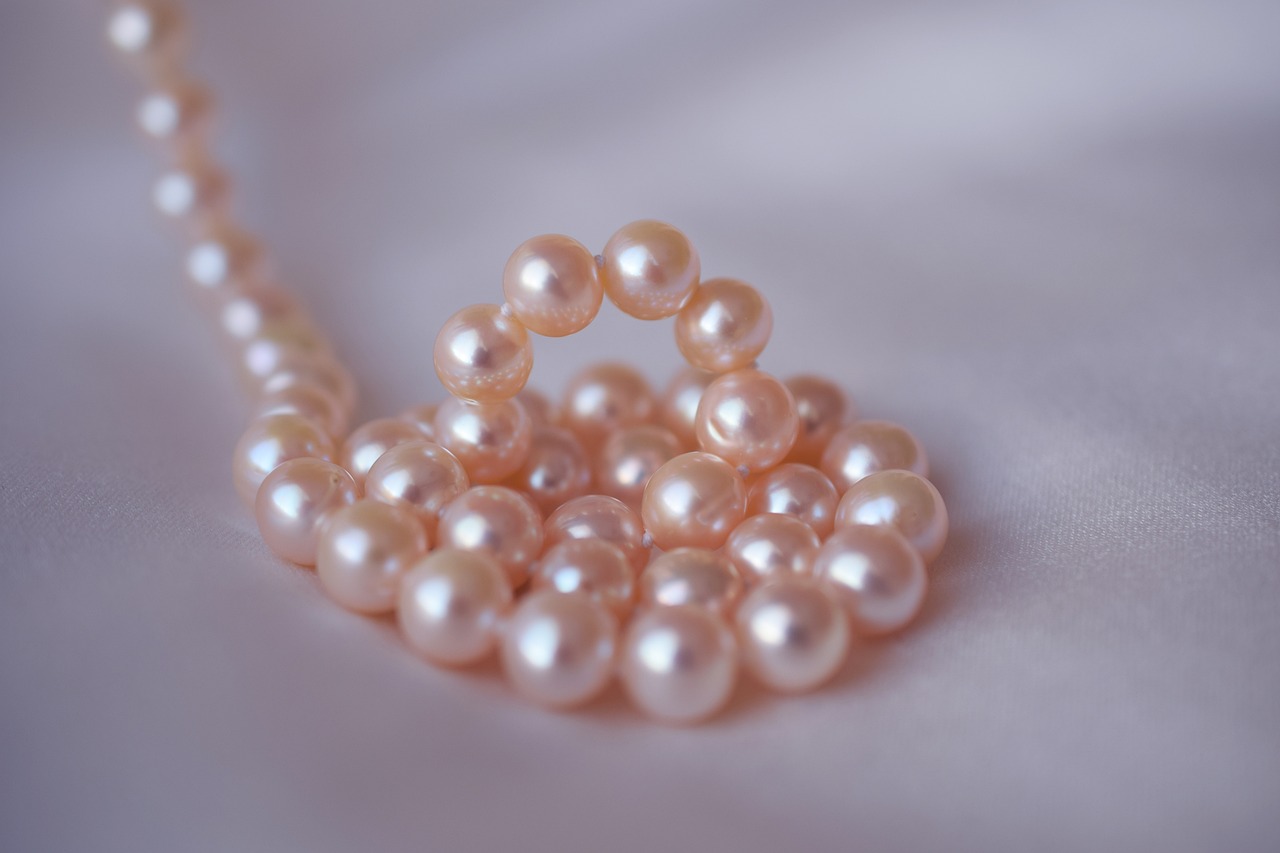
3. Iconic Luxury Jewelry Brands
The Most Luxurious Jewelry Brands You Should Know
This article explores the world of luxury jewelry, highlighting renowned brands, their unique offerings, and what makes them stand out in the competitive market of fine jewelry.
This section emphasizes some of the most prestigious jewelry brands that are celebrated for their exceptional quality and timeless designs. These brands are not just names; they embody a legacy of artistry, history, and unparalleled craftsmanship.
- Cartier: Often regarded as the epitome of luxury, Cartier is renowned for its exquisite pieces that blend tradition with modernity. The brand’s iconic designs, such as the Cartier Love Bracelet, have become symbols of eternal love and commitment.
- Tiffany & Co.: Famous for its distinctive blue box, Tiffany & Co. has a storied history of creating stunning engagement rings and fine jewelry. The brand’s commitment to quality and elegance has made it a favorite among those seeking timeless pieces.
- Van Cleef & Arpels: Known for its intricate designs and unique Alhambra collection, Van Cleef & Arpels combines innovative techniques with a deep appreciation for nature and art. The brand’s pieces often tell a story, making them highly coveted.
- Chopard: A brand synonymous with luxury, Chopard is famous for its high-end watches and jewelry. The brand’s dedication to sustainability and ethical sourcing has also positioned it as a leader in the modern luxury market.
- Harry Winston: Often referred to as the “King of Diamonds,” Harry Winston is celebrated for its breathtaking diamond jewelry. The brand’s pieces are often seen on red carpets, showcasing its status as a leader in the luxury jewelry segment.
These brands not only represent luxury but also carry a rich heritage, making each piece they create a work of art. As consumers, understanding the significance of these brands enhances the appreciation for the jewelry we choose to wear.
3.1 Cartier: A Legacy of Elegance
Cartier, a name that resonates with the essence of luxury, has established itself as a beacon of exquisite craftsmanship and iconic design. Founded in 1847 by Louis-François Cartier in Paris, the brand has a rich heritage that intertwines with the history of jewelry making itself. Over the decades, Cartier has become synonymous with elegance, creating pieces that have adorned the likes of royalty and celebrities worldwide.
The brand’s commitment to quality and artistry is evident in every piece it produces. Cartier is renowned for its innovative designs, such as the Cartier Love Bracelet, which symbolizes eternal love and commitment. This iconic piece, along with others like the Panthère de Cartier collection, showcases the brand’s ability to blend tradition with modernity, making it a favorite among discerning collectors.
One of the hallmarks of Cartier’s success is its ability to adapt to changing trends while maintaining its core values. The brand has always embraced innovation, whether through the introduction of new materials or the incorporation of contemporary design elements. This forward-thinking approach has allowed Cartier to remain at the forefront of the luxury jewelry market.
Moreover, Cartier’s dedication to craftsmanship is unparalleled. Each piece is meticulously crafted by skilled artisans who employ techniques passed down through generations. This attention to detail ensures that every item not only meets but exceeds the expectations of its clientele.
In conclusion, Cartier stands as a testament to the enduring allure of luxury jewelry. Its legacy is not just about creating beautiful items; it is about telling stories through design and craftsmanship. As the brand continues to evolve, it remains a symbol of elegance and a benchmark for excellence in the world of fine jewelry.
3.2 Tiffany & Co.: The Blue Box Brand
Tiffany & Co. is not just a name; it is a symbol of luxury and romance in the world of fine jewelry. Established in 1837, this iconic brand has carved a niche for itself with its distinctive blue box, which has become synonymous with elegance and sophistication. Each Tiffany piece is crafted with meticulous attention to detail, ensuring that it not only meets but exceeds the expectations of its discerning clientele.
The allure of Tiffany & Co. lies in its rich heritage and commitment to quality. The brand is renowned for its exquisite engagement rings, which are often considered the gold standard in the industry. These rings are designed to symbolize love and commitment, making them a popular choice for couples embarking on their journey together. The famous Tiffany Setting, which elevates the diamond above the band, allows for maximum light exposure, enhancing the stone’s brilliance and fire.
Beyond engagement rings, Tiffany & Co. offers a diverse range of jewelry, including necklaces, bracelets, and earrings, all crafted from the finest materials. The brand is particularly known for its use of high-quality diamonds and precious metals, ensuring that each piece is not only beautiful but also durable.
Moreover, Tiffany & Co. has embraced modern trends while staying true to its classic roots. The brand has introduced customizable options, allowing customers to create personalized pieces that reflect their unique style and story. This blend of tradition and innovation has helped Tiffany maintain its status as a leader in the luxury jewelry market.
In conclusion, Tiffany & Co. represents more than just jewelry; it embodies a lifestyle of elegance and sophistication. Whether it’s the iconic blue box or the exquisite craftsmanship of each piece, Tiffany continues to enchant customers around the world, making it a timeless choice for those seeking to celebrate love and special moments.

4. The Craftsmanship Behind Luxury Jewelry
The Craftsmanship Behind Luxury Jewelry is a fascinating topic that unveils the intricate processes and skilled artistry involved in creating these exquisite pieces. Understanding this craftsmanship allows consumers to truly appreciate the value and artistry that each jewelry item embodies.
Luxury jewelry is not merely about aesthetics; it is a culmination of dedication, skill, and a deep understanding of materials. The journey of creating a piece of luxury jewelry often begins with the selection of high-quality materials. Artisans meticulously choose precious metals like gold and platinum, along with a variety of precious and semi-precious gemstones. Each material is selected not only for its beauty but also for its durability and symbolism.
Moreover, the role of artisans in this process cannot be overstated. These skilled professionals possess years of training and experience, often passed down through generations. They blend traditional techniques with modern innovations to create stunning designs that stand the test of time. The process can involve numerous stages, including sketching, casting, setting stones, and finishing touches, each requiring a high level of precision and artistry.
| Stage of Craftsmanship | Description |
|---|---|
| Design | Initial sketches and conceptualization of the piece. |
| Material Selection | Choosing the right metals and gemstones for the design. |
| Production | Using various techniques to create the piece, including casting and stone setting. |
| Finishing | Final touches such as polishing and quality checks. |
Additionally, the importance of innovation in luxury jewelry design cannot be overlooked. Many brands are now incorporating new technologies and sustainable practices, ensuring that their craftsmanship not only meets high standards of quality but also aligns with modern values. This evolution in craftsmanship reflects a broader trend towards ethical luxury, where consumers are increasingly aware of the origins and production methods of their jewelry.
In conclusion, the craftsmanship behind luxury jewelry is a complex interplay of tradition, innovation, and artistry. By understanding this process, consumers can gain a deeper appreciation for the intricate details and emotional significance that each piece carries, enhancing their overall experience in the world of luxury jewelry.
4.1 Materials Used in Luxury Jewelry
Luxury jewelry is not just an accessory; it is an investment in artistry, heritage, and personal expression. The materials used in crafting these exquisite pieces play a crucial role in their value and appeal. Here, we explore some of the most significant materials that define luxury jewelry.
- Gold: Renowned for its timelessness and versatility, gold is a staple in luxury jewelry. Available in various karats, it is often alloyed with metals like copper or silver to enhance its strength and change its color. The warm hues of yellow gold, the modern appeal of white gold, and the romantic allure of rose gold each offer unique aesthetics, catering to diverse tastes.
- Platinum: As one of the rarest metals on Earth, platinum signifies exclusivity and durability. Its natural white sheen complements gemstones beautifully, making it a preferred choice for engagement rings and high-end pieces. Moreover, platinum is hypoallergenic, appealing to those with sensitive skin.
- Precious Gemstones: The allure of luxury jewelry is often enhanced by the inclusion of precious gemstones such as diamonds, emeralds, sapphires, and rubies. These stones are not only valued for their beauty but also for their rarity and historical significance. For instance, diamonds symbolize eternal love, while sapphires are associated with wisdom and royalty.
- Alternative Materials: In recent years, luxury brands have begun to explore alternative materials like lab-grown diamonds and ethically sourced stones. These options appeal to a growing consumer base that values sustainability and ethical practices in luxury purchases.
The choice of materials in luxury jewelry reflects not only the aesthetic preferences of the wearer but also their values and lifestyle. As the market evolves, so too does the innovation in materials, ensuring that luxury jewelry remains a vibrant and dynamic field.
4.2 The Role of Artisans and Designers
In the realm of luxury jewelry, artisans and designers are the unsung heroes who bring dreams to life through their exceptional skills and creativity. These talented individuals blend traditional techniques with innovative designs, resulting in breathtaking pieces that tell a story and evoke emotions.
The process begins with the artisan’s meticulous selection of materials. High-quality metals like gold and platinum, along with exquisite gemstones, are chosen for their beauty and durability. Each piece is crafted with precision, often using techniques passed down through generations. This dedication to craftsmanship not only enhances the quality of the jewelry but also preserves the rich heritage of the art form.
Moreover, designers play a pivotal role in conceptualizing unique pieces that resonate with contemporary tastes while honoring classic styles. They draw inspiration from various sources, including nature, architecture, and cultural motifs. This fusion of innovation and tradition allows for the creation of jewelry that is not only visually stunning but also meaningful.
| Role | Description |
|---|---|
| Artisans | Skilled craftsmen who execute the physical creation of jewelry using traditional methods. |
| Designers | Creative minds who conceptualize and design jewelry pieces, blending modern trends with timeless elegance. |
Collaboration between artisans and designers is essential in the luxury jewelry sector. Their combined efforts ensure that each piece is not just a product, but a work of art that reflects the brand’s identity and values. This partnership results in jewelry that is cherished for generations, embodying both luxury and heritage.
In conclusion, the role of artisans and designers in luxury jewelry is indispensable. They not only create beautiful pieces but also preserve the artistry and craftsmanship that define the industry. As consumers increasingly seek authenticity and uniqueness in their jewelry, the contributions of these skilled professionals will continue to shine brightly.
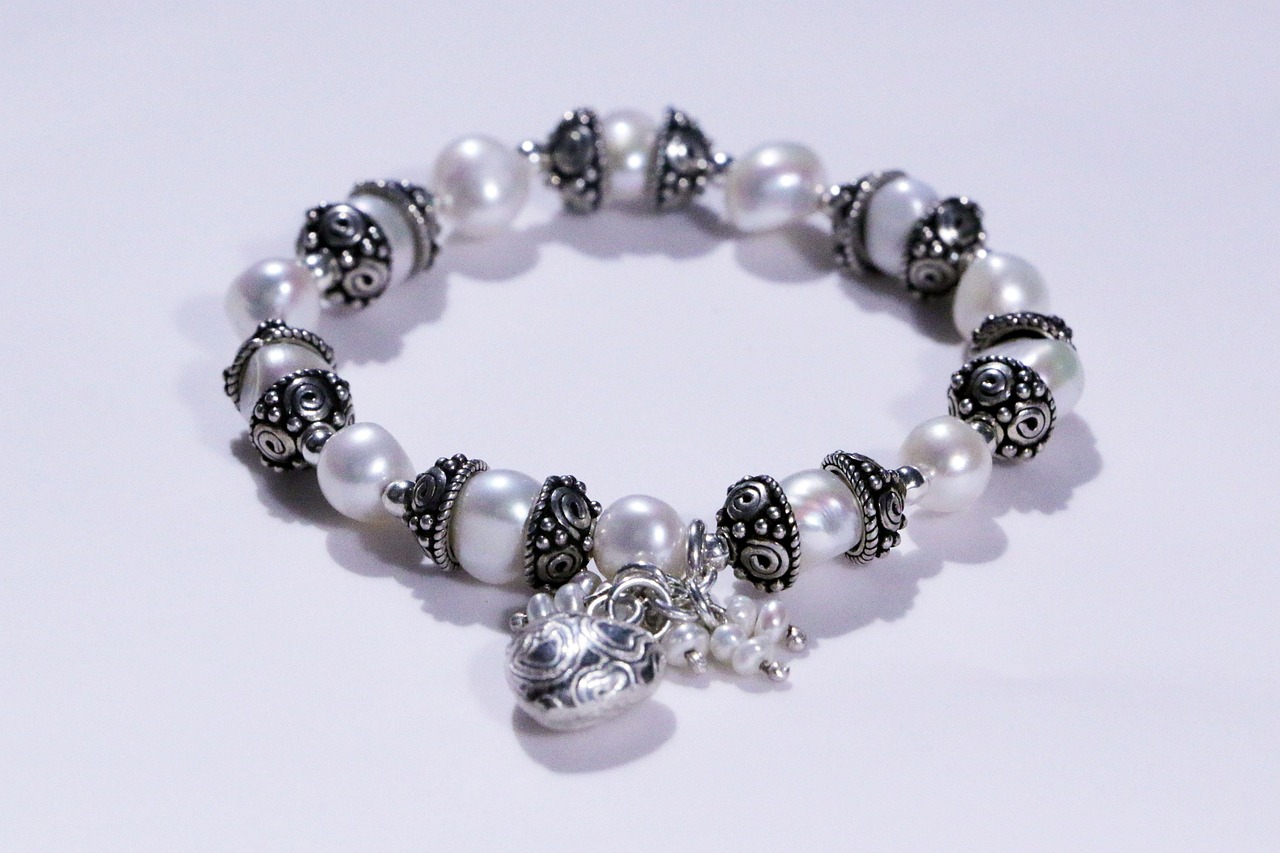
5. The Importance of Brand Heritage
In the realm of luxury jewelry, brand heritage plays a crucial role that extends beyond mere marketing. It is a reflection of a brand’s history, values, and commitment to quality, all of which resonate deeply with consumers. The significance of brand heritage lies in its ability to convey a sense of authenticity and trust, which are paramount in a market where consumers seek not just products, but stories and legacies.
Luxury jewelry brands often have rich histories that date back decades, if not centuries. This heritage is woven into every piece they create, showcasing a dedication to craftsmanship and an understanding of the artistry involved. For instance, brands like Cartier and Tiffany & Co. have established themselves not only through their exquisite designs but also through their storied pasts, which enhance their appeal to discerning customers.
- Storytelling in Luxury Branding: Luxury brands effectively use storytelling to connect with their audience. By sharing their origins, milestones, and the artisans behind their creations, these brands foster a deeper emotional connection with consumers.
- The Role of Heritage in Consumer Choices: A strong brand heritage can influence consumer purchasing decisions. Shoppers are more likely to invest in pieces from brands that demonstrate a long-standing commitment to quality and excellence.
Moreover, brand heritage allows luxury jewelry companies to differentiate themselves in a crowded market. In an era where consumers are bombarded with choices, the history and legacy of a brand can serve as a powerful differentiator. It reassures customers that they are purchasing not just a piece of jewelry, but a slice of history that embodies luxury, quality, and timelessness.
In conclusion, the importance of brand heritage in the luxury jewelry market cannot be overstated. It is a vital component that enhances consumer trust, drives brand loyalty, and ultimately influences purchasing decisions, ensuring that the legacy of these brands continues to thrive in the future.
5.1 Storytelling in Luxury Branding
Storytelling in Luxury Branding has emerged as a powerful tool for luxury brands to forge deeper connections with their consumers. In an era where authenticity and emotional engagement are paramount, brands are increasingly turning to their rich histories and core values to craft compelling narratives that resonate with their audience.
Luxury brands often encapsulate their unique stories through various mediums, including advertising campaigns, social media content, and in-store experiences. This storytelling not only highlights the brand’s heritage but also emphasizes the craftsmanship and dedication that go into each piece of jewelry. By sharing their journey, brands create a sense of belonging and loyalty among consumers who appreciate the artistry and tradition behind the products.
For instance, brands like Cartier and Tiffany & Co. utilize their historical milestones to enhance their appeal. Cartier often references its royal connections and iconic designs, while Tiffany’s narrative is deeply intertwined with romance and love stories, particularly through its famous engagement rings. These narratives not only elevate the brand’s status but also evoke emotional responses that encourage consumers to invest in their products.
Furthermore, the use of storytelling allows luxury brands to differentiate themselves in a highly competitive market. By emphasizing their unique values, such as sustainability or artisanal craftsmanship, they can attract a discerning clientele that values more than just the product itself. This strategy not only fosters brand loyalty but also encourages word-of-mouth marketing as consumers share their personal connections to the brand’s story.
In conclusion, storytelling is not merely a marketing strategy for luxury brands; it is a vital component of their identity. By weaving their history, values, and craftsmanship into engaging narratives, these brands can create lasting relationships with consumers, ultimately enhancing brand loyalty and driving sales.
5.2 The Impact of Celebrity Endorsements
The Impact of Celebrity Endorsements
In today’s competitive luxury market, the role of celebrity endorsements has become increasingly pivotal. When a well-known figure aligns themselves with a brand, it can dramatically elevate the brand’s status and desirability. This phenomenon is not merely a marketing strategy; it is a powerful tool that can shape public perception and consumer behavior.
Firstly, celebrities bring their own personal brand to the table, which can enhance the image of the luxury jewelry brand they represent. For instance, when a beloved actress is seen wearing a particular jewelry piece, it can instantly create a buzz around that item. Fans and consumers often aspire to emulate their favorite stars, making them more likely to purchase products associated with these celebrities.
Moreover, the trust factor plays a crucial role in this dynamic. Consumers are more inclined to trust a brand endorsed by a celebrity they admire, believing that the endorsement is a testament to the product’s quality and desirability. This trust can lead to increased sales and a stronger market position for the brand.
Additionally, celebrity endorsements can help luxury brands reach a wider audience. By leveraging the celebrity’s fan base, brands can penetrate new markets and demographics that they may not have accessed otherwise. This expansion can significantly boost brand visibility and recognition.
However, it is essential for brands to choose the right celebrity for endorsement. The celebrity’s image and values must align with the brand’s identity to maintain authenticity and credibility. A mismatch can lead to negative public perception and damage the brand’s reputation.
In conclusion, celebrity endorsements are a powerful marketing tool in the luxury jewelry market. They can enhance a brand’s image, build consumer trust, and expand market reach. As the industry continues to evolve, brands must strategically navigate these endorsements to maximize their impact and maintain their prestigious status.

6. Current Trends in Luxury Jewelry
Staying updated on current trends in luxury jewelry is essential for consumers who wish to make informed choices. The luxury jewelry market is dynamic, with trends constantly evolving to reflect changes in consumer preferences, societal values, and technological advancements. Understanding these trends not only helps buyers select pieces that resonate with their personal style but also ensures that their investments hold value over time.
One of the most significant trends in the luxury jewelry sector is the growing emphasis on sustainability. More consumers are becoming aware of the environmental and ethical implications of their purchases. As a result, luxury brands are increasingly adopting ethical sourcing practices and using recycled materials in their creations. This shift not only appeals to eco-conscious consumers but also enhances the brand’s image as a responsible entity within the industry.
Another notable trend is the rise of personalization and customization. Consumers are no longer satisfied with off-the-shelf pieces; they seek unique jewelry that tells their personal story. This trend has led many luxury brands to offer bespoke services, allowing customers to design their jewelry or modify existing pieces. This level of personalization not only enhances customer satisfaction but also fosters a deeper emotional connection to the jewelry.
Additionally, the influence of technology on luxury jewelry is becoming increasingly apparent. Innovations such as 3D printing and virtual reality are transforming how jewelry is designed and sold. Brands are utilizing these technologies to create intricate designs that were previously unimaginable and to offer virtual try-on experiences, making it easier for consumers to visualize how a piece will look before making a purchase.
In conclusion, staying abreast of current trends in luxury jewelry empowers consumers to make choices that are not only stylish but also aligned with their values and lifestyle. By understanding the importance of sustainability, personalization, and technological advancements, buyers can invest in pieces that truly reflect their individuality while ensuring long-term value.
6.1 Sustainable Luxury Jewelry
Sustainability has emerged as a pivotal theme within the luxury jewelry sector, reflecting a broader societal shift towards ethical consumerism. As consumers become more aware of the environmental and social impacts of their purchases, luxury brands are responding by integrating sustainable practices into their operations.
Many prestigious jewelry houses are now committed to responsible sourcing of materials, ensuring that diamonds, gold, and other precious metals are obtained through ethical means. This includes sourcing from mines that adhere to strict environmental regulations and labor practices, which helps to mitigate the negative impacts often associated with traditional mining operations.
| Key Sustainable Practices | Description |
|---|---|
| Ethical Sourcing | Ensuring materials are obtained from conflict-free zones and fair labor practices are followed. |
| Recycled Materials | Utilizing recycled metals and gemstones to reduce the environmental footprint. |
| Transparency | Providing consumers with information about the origin and lifecycle of products. |
Moreover, brands are increasingly focusing on transparency in their supply chains. By openly sharing information about where and how their materials are sourced, they build trust with consumers who prioritize ethical considerations in their purchasing decisions. This level of transparency not only enhances brand loyalty but also encourages other companies in the industry to adopt similar practices.
In addition to ethical sourcing, the use of recycled materials is gaining traction. Many luxury brands are now producing jewelry using recycled gold and gemstones, which significantly reduces the demand for newly mined resources. This shift not only conserves natural resources but also minimizes the environmental impact associated with mining activities.
As the luxury jewelry market continues to evolve, the emphasis on sustainability is likely to grow. By prioritizing ethical practices and responsible sourcing, luxury brands are not only enhancing their reputations but also contributing to a more sustainable future for the industry as a whole.
6.2 Personalization and Customization Trends
In today’s fast-paced world, the demand for personalized and customized jewelry is at an all-time high. Consumers are increasingly seeking pieces that not only reflect their personal style but also tell their unique stories. This trend signifies a shift from traditional mass-produced jewelry to more individualized creations that resonate deeply with the wearer.
Why Personalization Matters
- Personalization allows individuals to express their identity and emotions through their jewelry.
- Customized pieces often hold sentimental value, making them cherished keepsakes.
- The opportunity to collaborate with designers fosters a deeper connection between the consumer and the piece.
Popular Personalization Options
- Engraving: Adding names, dates, or special messages to jewelry enhances its significance.
- Choice of Materials: Consumers can select metals, gemstones, and finishes that align with their personal preferences.
- Design Modifications: Many brands offer the option to modify existing designs to better suit individual tastes.
Impact of Technology on Customization
Advancements in technology, such as 3D printing and online design tools, have revolutionized the customization process. Consumers can now visualize their designs and make adjustments in real-time, leading to a more satisfying experience. This accessibility has empowered more people to explore their creativity and invest in unique jewelry pieces.
The Future of Personalized Jewelry
As the trend continues to grow, luxury jewelry brands are adapting their offerings to cater to this demand. The focus on personalization is expected to shape the future of the industry, influencing not only design but also marketing strategies. Brands that prioritize customization will likely build stronger relationships with their customers, fostering loyalty and enhancing their market presence.
In conclusion, the shift towards personalized and customized jewelry reflects a broader cultural movement towards individuality and self-expression. As consumers seek ways to stand out, the jewelry industry will continue to evolve, creating opportunities for unique designs that resonate on a personal level.
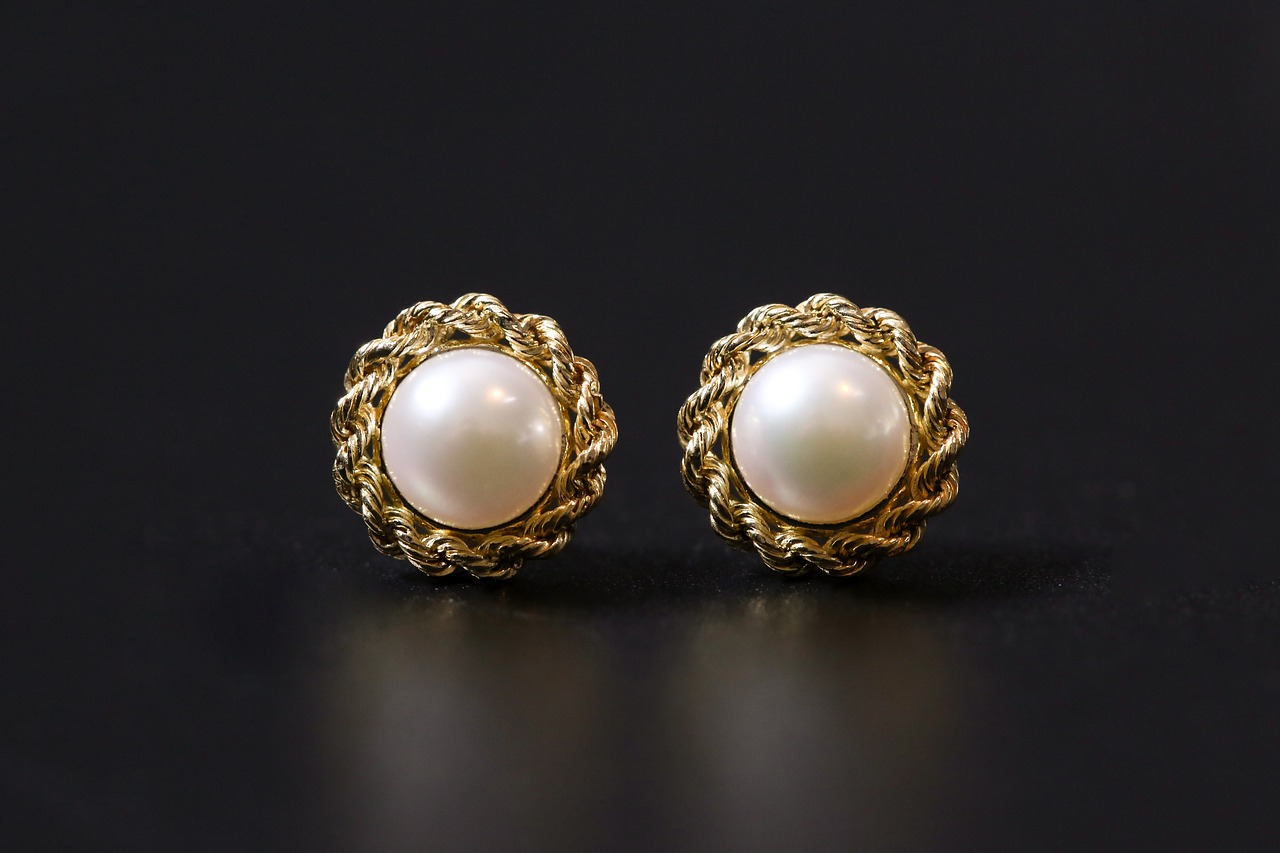
7. Conclusion: The Future of Luxury Jewelry
The luxury jewelry market is on a remarkable journey of transformation, reflecting the evolving tastes and values of consumers. As we look towards the future, several key trends and innovations are shaping the landscape of luxury jewelry, making it essential for consumers to stay informed.
One of the most significant shifts is the growing emphasis on sustainability. Modern consumers are increasingly aware of the environmental and ethical implications of their purchases. As a result, luxury brands are adopting responsible sourcing practices, ensuring that the materials used in their creations are ethically mined and produced. This trend not only addresses consumer concerns but also enhances the brand’s reputation and appeal.
In addition to sustainability, personalization is becoming a dominant theme in luxury jewelry. Consumers are seeking unique pieces that reflect their individual style and story. Brands are responding by offering customizable options, allowing clients to create one-of-a-kind designs tailored to their preferences. This shift towards personalization not only enhances customer satisfaction but also fosters a deeper emotional connection between the consumer and the brand.
Moreover, the integration of technology in luxury jewelry is paving the way for innovative designs and enhanced customer experiences. From augmented reality try-ons to blockchain technology for verifying authenticity, tech advancements are revolutionizing how consumers interact with luxury jewelry. This technological integration provides a more engaging shopping experience while ensuring transparency and trust in the luxury market.
As we move forward, it is clear that the luxury jewelry market will continue to evolve, driven by innovation and changing consumer preferences. By staying informed about these trends, consumers can navigate the intricate world of luxury jewelry with confidence and make informed purchasing decisions that align with their values.
In conclusion, understanding the dynamics of the luxury jewelry market is crucial for consumers. As sustainability, personalization, and technology take center stage, the future of luxury jewelry promises to be more inclusive, innovative, and reflective of individual values.
Frequently Asked Questions
- What defines a luxury jewelry brand?
Luxury jewelry brands are characterized by their exceptional craftsmanship, unique designs, and the use of high-quality materials. They often have a rich heritage and a strong brand story that resonates with consumers, making each piece not just an accessory but a symbol of status and artistry.
- How can I identify authentic luxury jewelry?
To identify authentic luxury jewelry, look for hallmarks or stamps that indicate the brand and the metal’s purity. Additionally, consider purchasing from reputable retailers and check for certificates of authenticity. The craftsmanship should also reflect the brand’s standards, with no visible flaws or poor finishes.
- Are luxury jewelry brands adopting sustainable practices?
Yes! Many luxury jewelry brands are increasingly adopting sustainable practices by sourcing materials ethically and implementing environmentally friendly production methods. This trend reflects a growing consumer demand for responsible luxury, allowing buyers to feel good about their purchases.
- What is the significance of brand heritage in luxury jewelry?
Brand heritage plays a crucial role in luxury jewelry as it conveys authenticity and a commitment to quality. Consumers often feel a deeper connection to brands with a storied past, which enhances their loyalty and willingness to invest in high-end pieces.
- How do trends in luxury jewelry change over time?
Trends in luxury jewelry evolve based on cultural shifts, consumer preferences, and innovations in design and materials. Keeping an eye on current trends can help consumers make informed decisions and choose pieces that reflect their personal style while staying fashionable.

